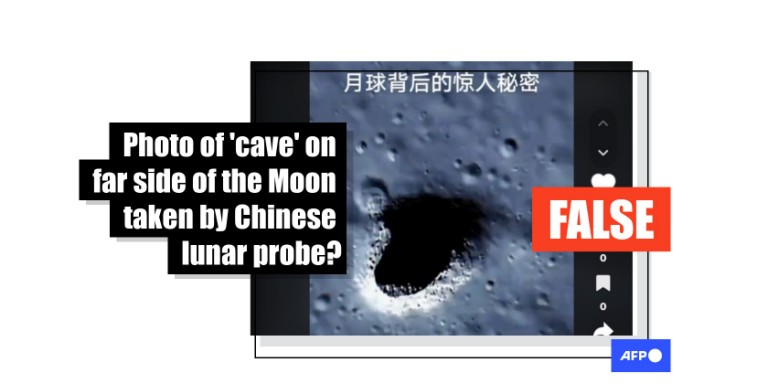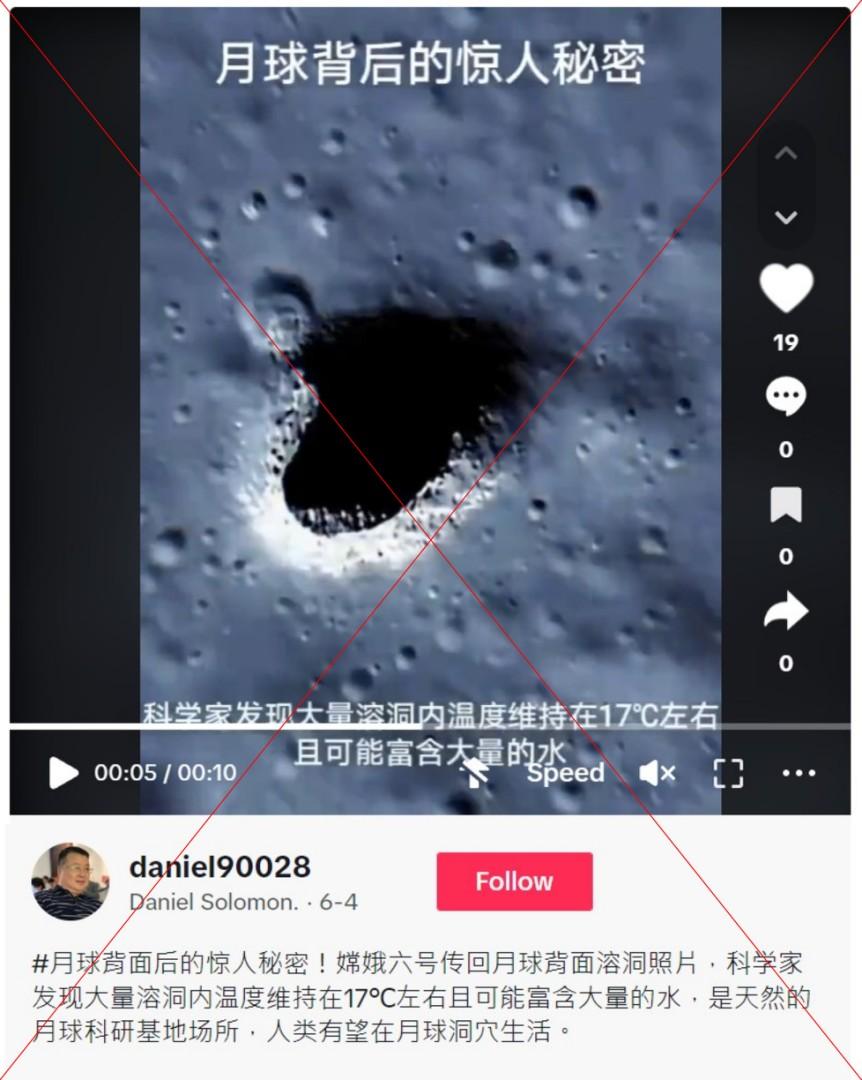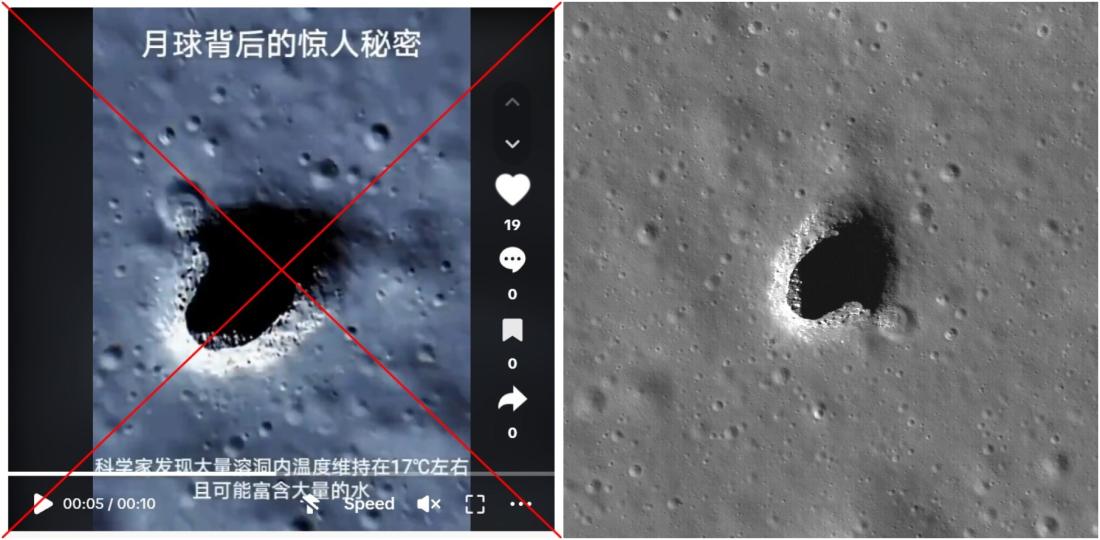
Photo of far side of the Moon taken by NASA orbiter in 2010, not China's Chang'e-6 probe
- This article is more than one year old.
- Published on June 18, 2024 at 10:14
- 2 min read
- By Tommy WANG, AFP Hong Kong
"Shocking secrets of the far side of the Moon are revealed! Chang'e-6 sends back photos of caves on the far side of the Moon," read the simplified Chinese title of a TikTok video posted on June 4, 2024.
The video appears to show an image of a pit on the lunar surface.

The image surfaced shortly after the China National Space Administration released photos of the surface of the Moon taken by its Chang'e-6 lunar probe on June 4, 2024.
The Chang'e-6 probe -- part of Beijing's ambitious programme that aims to send a crewed lunar mission by 2030 -- became the first craft to successfully take off from the far side of the Moon on that day, carrying samples back to Earth, state media reported.
The image of the Moon pit also surfaced alongside similar false claims it was taken by the Chinese lunar probe elsewhere on X, Weibo and Taiwanese media outlet Newtalk.
Similar false claims about the photo circulated in Japanese, Spanish and Catalan.
In fact, the picture was taken by a NASA spacecraft and released in June 2010, years before the Chang'e-6 probe was launched.
NASA photo
Keyword and reverse image searches on Google found the picture was originally released by NASA in 2010, but was mirrored and then rotated 90 degrees clockwise (archived link).
According to NASA, the photo was taken by the Lunar Reconnaissance Orbiter (LRO), the first US Moon mission in over a decade, launched in 2009 (archived link).
Below is a screenshot comparison of the image used in the false posts (left) and the photo released by NASA (right):

The photo is titled "Depths of Mare Ingenii" -- referring to a unique geologic feature found on the far side of the Moon. Its caption explains the irregularly shaped hole is a rare pit first discovered by an earlier Japanese probe.
The pit shown in the photo can also be seen on a high-resolution image of the Mare Ingenii published on the LRO's website (archived link).
The website states the pit was likely formed as a result of a partially collapsed lava tube.
AFP has debunked other misinformation that has surfaced after the launch of the Chang'e-6 probe here, here and here.
Copyright © AFP 2017-2025. Any commercial use of this content requires a subscription. Click here to find out more.
Is there content that you would like AFP to fact-check? Get in touch.
Contact us
